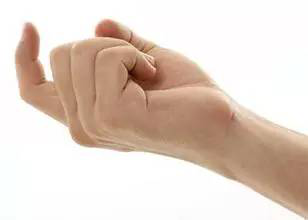在国外旅游,这些手势千万不能乱做!
身处异国旅游,当你需要和别人交流、却又不懂对方当地语言时,肢体语言就显得非常重要了。然而,每个国家的文化背景与历史渊源都有所不同,不是所有动作都能让当地人明白到你所要表达的意思,甚至有些动作还有可能会引起不必要的误会,下面这10种常见手势可就不能乱做哦~~~~
“V” in Australia and England
澳大利亚和英国-“V”字手势

In 1992, George Bush visited Australia and, from the window of his limousine, held up his index and middle fingers in the “V” shape, a la Winston Churchill. With the palm facing outward, this V means victory in England, or peace in North America. Too bad Bush gestured with his palm facing inward, the nonverbal equivalent of “up yours.”
1992年,乔治·布什拜访澳大利的时候,效仿温斯顿·丘吉尔,从豪华的轿车里伸出食指和中指作出“V”字形的手势。 手掌朝外摆出“V”字形在英国意味着胜利, 而在北美意味着和平。然而糟糕的是,布什的手掌是朝内的, 这一手势意味着“见你的鬼去吧”。
Displaying your palms in Greece
希腊-手掌外翻

We use this gesture in North America to say “stop,” or, if you’re a child of the Jerry Springer era, “talk to the hand.” In Greece, keep your palms to yourself. Holding your palms out towards a person is a highly insulting gesture. This gesture is said to be a remnant of Byzantine times, when people could taunt shackled criminals by smearing their faces with excrement.
这个手势在北美的意思是“停止”,或者,如果你是杰里·斯普林格那个时代的孩子,你就知道这个手势就意味着“懒得理你”。 在希腊,最好保持手掌对着自己,因为对着别人伸出手掌是一种非常侮辱人的手势。这个手势要追溯到拜占庭时期, 当时人们可以通过在脸上抹屎嘲讽狱中的罪犯。
Thumbs-up in Thailand
泰国-翘拇指

This gesture of agreement or approval is an easy reflex when language barriers are at play. Try to avoid it in Thailand, though, where it’s a sign of condemnation. It’s typically a child’s gesture, the Thai equivalent of sticking out your tongue. People will likely be more bemused than hurt if you slip up. Still, it’s a good one to avoid.
这个手势表示同意和认可,然而在有语言障碍时却可能起到反作用。在泰国尽量不要用这个手势,因为它表示谴责。这个手势是典型的孩子专用手势,在泰语中等同于吐舌头。如果你弄错了这个手势,虽然人们不会感到受伤而只是迷惑不解,但最好还是要尽量避免。
Beckoning in the Philippines
菲律宾-勾手指

Curling your index finger to say “come here” is a no-no in many Asian countries. In the Philippines, this gesture is only used for dogs. To use it with a person is derogatory; suggesting that you see them as a subservient inferior. Hardly a good way to make a first impression when signaling a waiter or shop clerk.
在许多亚洲国家,勾食指让别人“过来”是一种禁忌。在菲律宾,这个手势只用在狗身上。把它用在人身上是非常不敬的,表示你把他们看得低人一等。 招呼服务员或者店员时,这个手势绝不是留下第一印象的好办法。
Patting on the head in Sri Lanka
斯里兰卡-摸摸头

An open-palmed pat on the head of a child is a gesture of fondness in North America. If you need to get a child’s attention, it’s also the easiest place to tap them. In the Buddhist faith, though, the top of the head is the highest point of the body, and its where the spirit exists. To touch the top of a person’s head is highly invasive, for children and adults alike. Avoid this in any country with a predominant Buddhist population.
在北美,手掌轻拍小孩的头部是一种表示喜欢的手势。如果你需要引起小孩子的注意,最简单的方法就是轻拍他们的头部。不过,在佛教信仰中,头顶是身体的最高点,也是灵魂的所在之处。触摸一个人的头顶,无论他是小孩还是成人,都是非常不敬的。在以佛教为主的国家尽量避免这个动作。


